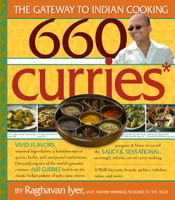Basmati Rice
Published 2008
Discovered and cultivated in the foothills of the Himalayas, this much-sought-after aromatic variety (basmati means “the perfumed one”) is the world’s most expensive rice. Naturally aged for many years, like a fine wine, before it graces your kitchen, basmati is less starchy and more slender than other long-grain varieties. Not only is it a complex carbohydrate, but it is also rich in amino acids and other essential nutrients, including iron, niacin, phosphorus, potassium, riboflavin, and thiamine. Basmati from India or Pakistan is not fortified with minerals, unlike the varieties grown in the United States. The kind most widely used has the outer husk and bran removed. Brown basmati is also available, but it is rarely used in India because of its short shelf life (the bran and husk harbor oil that can turn rancid rather quickly). Incidentally, if the label does not say “Indian [or Pakistani] basmati,” it isn’t true basmati. California basmati and Texmati are facsimiles (poor ones in my opinion); and I find these grains to be stout, short, and starchy.
Part of
Advertisement
Related Recipes
-
-
-
-
Related Reference
-
-
-
-
Advertisement



